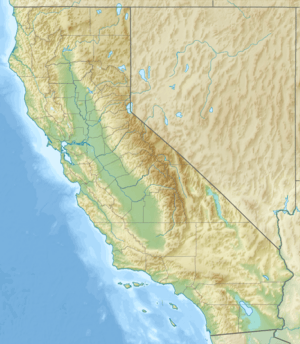Scott River facts for kids
Quick facts for kids Scott River |
|
|---|---|
|
Location of the mouth of Scott River in California
|
|
| Other name(s) | Beaver River |
| Country | United States |
| State | California |
| Region | Siskiyou County |
| Physical characteristics | |
| Main source | Confluence of South Fork Scott River and East Fork Scott River Callahan, California 3,120 ft (950 m) 41°18′45″N 122°48′12″W / 41.31250°N 122.80333°W |
| River mouth | Confluence with the Klamath River 1,460 ft (450 m) 41°46′44″N 123°02′06″W / 41.77889°N 123.03500°W |
| Length | 60 mi (97 km) |
| Basin features | |
| Basin size | 804 sq mi (2,080 km2) |
The Scott River is a 60-mile (97 km) long river in Siskiyou County, California, United States. It flows into the Klamath River, which is one of California's biggest rivers.
River History and Naming
Historically, fur trappers called this river the Beaver River. This was because many beaver lived there. The Hudson's Bay Company trapped most of the beavers in the early 1800s.
In 1836, Stephen Meek and 17 other trappers from the Hudson's Bay Company explored the area. Meek reported trapping 1,800 beavers in 1850 alone. He thought the area, then called Beaver Valley, was excellent for trapping and hunting. Meek later retired there.
The river and valley were renamed after gold was found. In 1850, a pioneer named John W. Scott discovered gold. This happened at Scott Bar, which is downstream from the valley. Many gold prospectors came to the area after his discovery.
Scott River Watershed
The Scott River's watershed covers about 800 square miles (2,072 square kilometers). A watershed is the area of land where all the water drains into one river. About two-thirds of this land is privately owned. The other one-third is public land.
About 45 percent of the land is used for forestry, which means growing trees. Another 40 percent is used for grazing animals. About 13 percent is used for cropland. The remaining 2 percent of the land is used for other purposes.
Habitat and Conservation Efforts
Mining activities in the past caused damage to the river. Between 1934 and 1950, large machines called dredges operated in Scott Valley. These dredges dug up material 50 to 60 feet (15 to 18 meters) below the riverbed. They also used mercury to process sand and gravel. This created large piles of waste material called tailings, some over 25 feet (7.6 meters) high.
Today, people are working to help the river's habitat. In Sugar Creek, a small stream that flows into the Scott River, there's a special project. A local landowner, Betsy Stapleton, worked with Michael Pollock from NOAA. They built "beaver dam analogues." These are structures made by driving posts into the creekbed. They are designed to attract beavers and encourage them to build their own dams.
Now, Sugar Creek has beaver ponds that stay full all year. Other nearby creeks often dry up in summer and fall. This method has worked well in other places, like Bridge Creek, Oregon. There, more beaver dams led to a big increase in rainbow trout.


